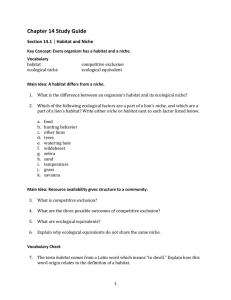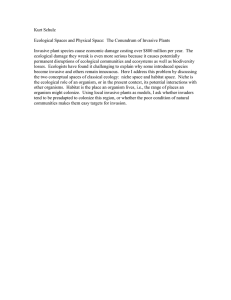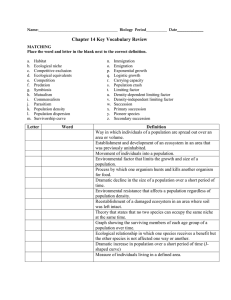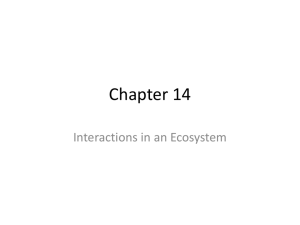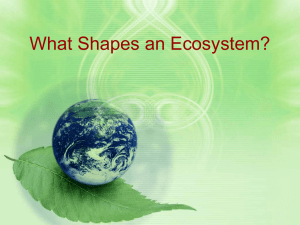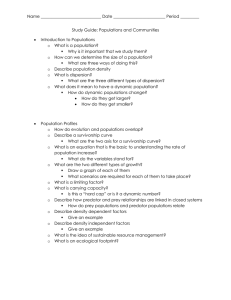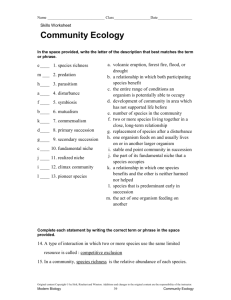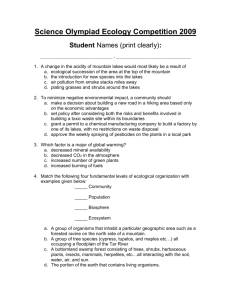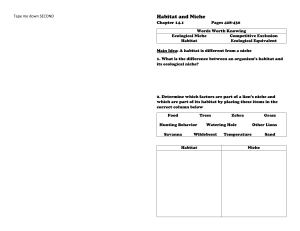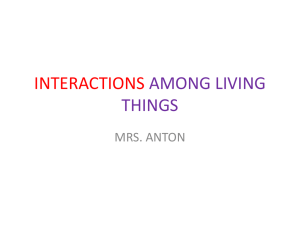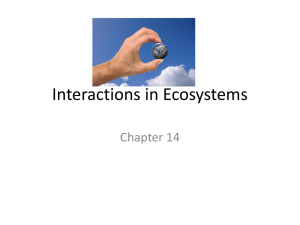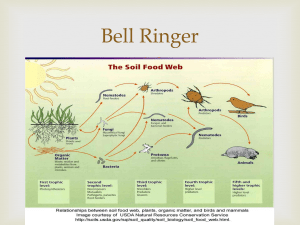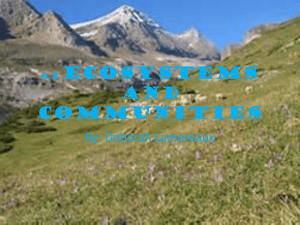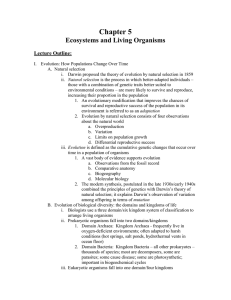Chapter 1 Section 2: Unifying Themes of Biology
advertisement
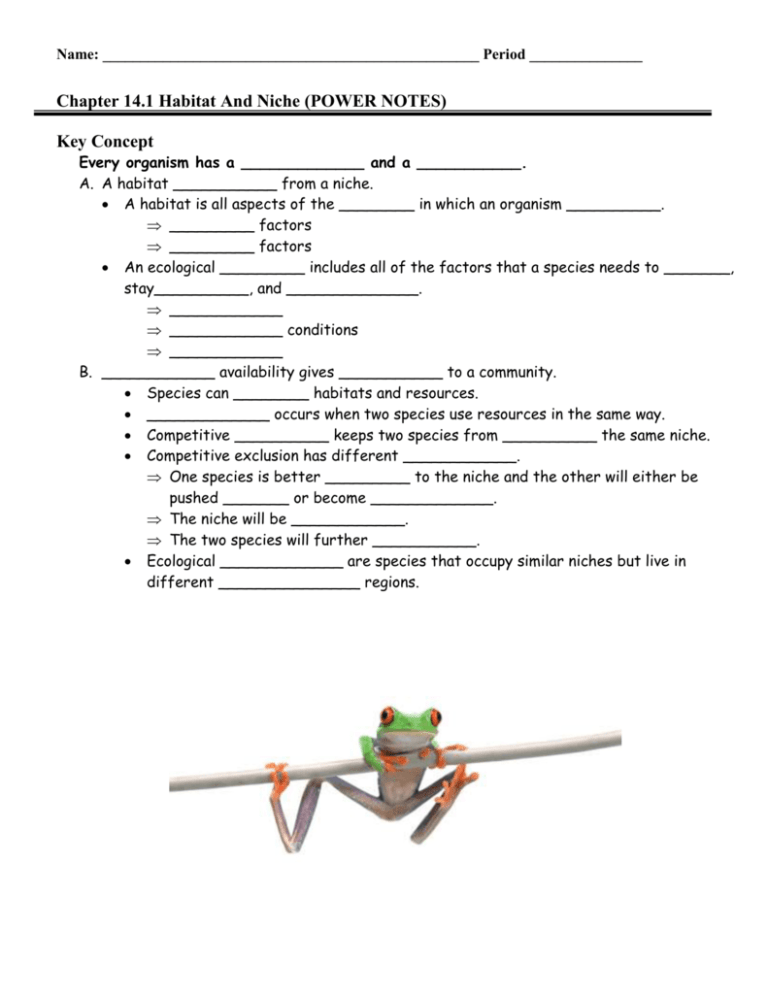
Name: __________________________________________________ Period _______________ Chapter 14.1 Habitat And Niche (POWER NOTES) Key Concept Every organism has a _____________ and a ___________. A. A habitat ___________ from a niche. A habitat is all aspects of the ________ in which an organism __________. _________ factors _________ factors An ecological _________ includes all of the factors that a species needs to _______, stay__________, and ______________. ____________ ____________ conditions ____________ B. ____________ availability gives ___________ to a community. Species can ________ habitats and resources. _____________ occurs when two species use resources in the same way. Competitive __________ keeps two species from __________ the same niche. Competitive exclusion has different ____________. One species is better _________ to the niche and the other will either be pushed _______ or become _____________. The niche will be ____________. The two species will further ___________. Ecological _____________ are species that occupy similar niches but live in different _______________ regions. Name: __________________________________________________ Period _______________ 14.2 COMMUNITY INTERACTIONS (POWER NOTES) Key Concept Organisms __________ as individuals and as ______________. A. ____________ and ____________ are two important ways in which organisms interact. Competition occurs when two organisms _________ for the same ___________ resource. _____________ competition _____________ competition ____________ occurs when one organism captures and eats another. There are three major types of ________________ relationships. ____________: both organisms benefit Commensalism: one organism __________, the other is _____________ ___________: one organism ___________, the other is harmed Parasites meet their needs as ______________ (such as leeches) and _______________ (such as hookworms) Visualize: Mutualism Visualize: Predation Visualize: Commensalism Name: __________________________________________________ Period _______________ 14.3 Density and Distribution (POWER NOTES) KEY CONCEPT Each population has a___________, a ___________, and a ______________ strategy. A. Population density is the ______________ of individuals that live in a defined __________. Scientists can calculate population ____________. Population density = _____________ (units2) B. Geographic _________________ of a population shows how individuals in a population are _____________. _____________ dispersion refers to how a population is _______________ in an area. There are _________ types of dispersion. Clumped Uniform Random ____________ __________ help to describe the reproductive strategy of a ___________. Survivorship curves can be __________, _____, or _________. Type I – low level of infant ______________ and an __________ population. Common to large ___________ and ____________. Type II – survivorship rate is __________ at all stages of ___________. Common to _________ and ___________. Type III – very high ___________, very high ____________ mortality. Common to _____________ and __________. Name: __________________________________________________ Period _______________ 14.4 Population and Growth Patterns (POWER NOTES) KEY CONCEPTS Populations grow in ______________ patterns. A. Changes in a population’s size are determined by ___________, births, ____________ and ____________. The size of a population is always ____________. __________ factors affect the ___________ of a population. Immigration __________ Emigration __________ B. Population growth is based on available _______________. ____________ growth is a _________ increase due to an ___________ of resources. _____________ growth is due to a population facing ____________ resources. ____________ ____________ is the maximum ___________ of individuals in a population that the environment can support. A population ___________ is a dramatic ________ in the size of a population over a short period of __________. C. Ecological factors _________ population growth. A ___________ factor is something that keeps the size of a population ________. __________- __________ __________ are affected by the number of individuals in a given area. __________ ___________ __________ __________ _____________ __________ limit a population’s growth regardless of the _________. o Unusual ___________ o ___________ disasters o ___________ activities. Name: __________________________________________________ Period _______________ 14.5 Ecological Succession KEY CONCEPTS Ecological _______________ is a process of _________ in the species that make up a community A. ________________ occurs following a disturbance in an ecosystem Succession regenerates or creates a ____________________ after a disturbance A sequence of ____________ events __________________ communities are _____________________ New communities arise in previously _____________________ areas B. There are _____ types of succession _______________ succession – started by _________________ species like _________________ and some ________________ Use book page 420 to fill in blocks below picture _______________ succession – started by _________________ species left over from a _________ or a _______________________ Use page 421 to fill in blocks below picture


